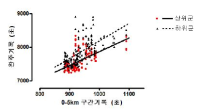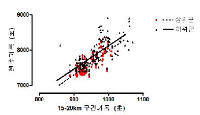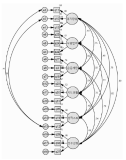Purpose The purpose of this study was to examine the role of trust on sport fan behavior following the favored team’s loss. Methods Online survey modes were employed to collect the data. A total of 300 individuals participated in the study, of which 288 were valid and therefore analyzed. To test the hypotheses, structural equation modeling was conducted using Mplus 8. Results The findings are as follows. First, cognitive trust had a significant effect(+) on future viewing intention. Second, affective trust had a significant effect(+) on future viewing intention. Third, cognitive trust had a significant effect(-) on switching behavior. Fourth, affective trust had no significant effect on switching behavior. Fifth, team identification moderated the relationship between affective trust and switching behavior. Conclusions The results of this study suggest that sport fans’ trust affects fan behavior following a team’s loss. Therefore, professional sport teams should seek to establish strong affective trust and cognitive trust.

The purpose of this study was to examine the relationship among service quality, psychological experiment, and positive feedback including the moderating effect of motivation at Formula One World Championship. Therefore, the proposed research model was divided and compared by the level of motivation. By using questionnaire method, we found the following results. First, high motivation group indicated a higher-level of service quality, psychological experiment, and positive feedback than low motivation group's. Second, service quality had an influence on positive feedback directly and indirectly with the psychological experiment as a mediator. Third, it would be more effective for high motivation group that driving positive feedback through promotion while both promotion and watch is effective for low motivation group to drive positive feedback. Thus, promotion is considered as an important factor in both high and low motivation group and the watch needs to be strengthened in high motivation group.


The purpose of this study was to examine that the reciprocal relationship between every 5km and full course running time record. In this study we extended our research scope to investigate whether any notable running time differences were existed among top level of marathoners. Comparisons were made using data which were drawn from 34 championship competitions had been held between year 2000 and year 2009 in Korea. Total 340 full time data was obtained from 340 marathoners who successfully completed their 42.195km running race, and divided into one of two categories, either upper ranked group (URG, ranked 1st~5th position in competitions they participated) or lower ranked group (LRG, ranked 6th~10th position in competitions they participated). Mean and standard deviation were calculated from SPSS (VER. 20.0), and repeated measures of ANOVA and Pearson's correlation was adopted to perform statistical analyses. There was no statistical difference of the running record during first 5km, however running time form all other 5km running sections was significantly faster in URG than LRG (p<.001). The gap of running time record between URG and LRG was getting more and more significant after 20km running. The quickest running record was found during 2nd 5km section (i.e., 5~10 km) and the each section's race time was getting drastically slower during 6th~7th 5km section running regardless of the study groups. Drawn conclusions from this study were that athletes use the strategy of deciding victory in both the beginning and the latter phase of marathon running. This implies that athletes who have the capacity, which make them run faster than others during the very beginning of marathon competition, and/or during 25~35km running sections would be the most preferable for the victory at the finish line.









Purpose The purpose of this study was to investigate the badminton players psychological disturbance and coping strategies types and characteristics. Methods To achieve the purpose of this study, an open-ended questionnaires were used targeting 194 badminton players, 25 Q samples were selected by collected data as the self – statement. Q samples were classified depending on their subjective experience by P samples composed of active badminton players who had more than eight years of athletic career; this data were coded and analyzed by VARIMAX rotation. Results The results revealed by the Q methodology were below. First of all, the first type is named as (Internal Disturbance - Passive Coping) type. The first type is psychologically disturbed by internal factors, and negative about external coping strategies. Second, the second type showed the higher awareness of coping strategies than the other types; It was named as (Active Coping) type. Third, The third type recognized the burden of victory and self-confidence, and it was named as the type of (Victory Obsession). Conclusion In the badminton competition, the deterioration of concentration and judgment ability because of psychological disturbance has a serious effect on the performance. Therefore, based on the results of this study, it will be possible to improve the performance by appropriate psychological intervention through the characteristics of the athletes.


Purpose The purpose of this study was to examine athletes’ psychological competition experiences. Methods For this study, 64 student athletes, attending universities located in Seoul and Chungcheongbuk-do, participated in the study by completing an unconstructed questionnaire. The data were analysed through content analysis method. Results As a result, 15 themes, such as morale loss, comparable performance levels, opponent irritation were collected and the themes were classified into three categories including objectives of psychological competition, requirements of psychological competition, and psychological battle. In match situations, athletes attempt to psychologically compete in order to achieve objectives such as opponent’s morale loss, induce carelessness, trigger agitation and anger, dispersion of attention, and distraction. Psychological competition among rivals is valid when the requirements, such as comparable performance levels, sensitivity to match situations, strong tenacity and confidence, understanding of opponent and oneself, mutual checks and balances, are met. Athletes attack and defend to win the psychological competition by utilizing opponents irritation, information distortion, unexpected behaviors, predicting and coping, pulling a poker face, exclusion of opponents, and self-focusing. Conclusion This study created a theoretical foundation for a profound understanding of athletes’ psychological competition, which is often found in sport fields. Furthermore, this study is meaningful in that it has raised a chance of interest concerning psychological interaction between players in match situations.
PURPOSE Sporting events constitute attractive platforms for providing participants with unique experiences. This study was aimed at investigating the structural relationships among perceived sporting event quality, image, trust, satisfaction, and loyalty of small-scale golf tournament participants. METHODS The questionnaire was structured in five dimensions: sporting event quality (4 sub-dimensions and 13 items), image (3 items), trust (3 items), satisfaction (3 items), and loyalty (4 items). A total of 217 amateur golfers from four Ecolian public golf clubs (Gwangsan, Jechon, Jeoungsun, and Younggwang) during the golf tournament participated in this study. Factor, reliability, validity, and structural equation model analyses were performed utilizing SPSS 24.0 and AMOS 24.0. RESULTS This study indicated that sporting event quality in a small-scale sporting event was the crucial factor of image, trust, and satisfaction, which, in turn, significantly impacted loyalty. CONCLUSIONS The results of this study contribute to theoretical understandings of sporting event quality factors that predict sport consumers’ image, trust, and satisfaction in the context of sports and leisure. Additionally, this study offers practical suggestions for administrators who develop marketing strategies for small-scale sporting events.

This study was to explore and confirm factors of sport psychology counseling needs in Korean elite coaches. In order to achieve this purpose, 56 elite coaches in Korean Olympic training center at Taereung and Jincheon responded on open-questionnaire and 260 coaches responded on survey. Open-ended questionnaire responses were analyzed by inductive content analysis and collected survey data were analyzed by exploratory factor analysis and confirmatory analysis. The results were as follows: Firstly, sport psychology counseling needs of elite coaches were competition preparation, negative athlete-coach relationship, athlete private problems, performance degradation, pressure on performance result, injury management, team cohesion degradation, motivation, training management, different gender athlete control, athletes drop out, pressure from outside, conflicts with colleagues, neglecting from athletes, feeling of incompetence, emotional control problem, and so on. Secondly, based on these responses, closed-ended questionnaire was developed, surveyed, and analyzed. Exploratory factor analysis illustrated that sports counseling needs of coaches were performance enhancement strategies, unreasonable pressure, negligence on training, coaching stress, competition result stress, conflicts with athletes. Finally, confirmatory factor analysis showed that construct of sport counseling needs illustrated appropriate fit indices values. The results of this study contributed to provide fundamental information on coaching education program and sport psychology counseling program development and application. Consequently, it will help coaches to control their mind at coaching in training and competitions.

[Purpose] The purpose of this study was to predict winning percentage in the Korean Basketball League(KBL) by applying the possession concept. [Methods] The model to estimate possession was utilized by formula used in NBA(National Basketball Association). Data consist of 20 seasons of the KBL (1997-2017). For data analysis, multiple regression analysis, Fisher’s Z transformation and stepwise multiple regression analysis were performed using SPSS 22.0. [Results] The result indicated that average team stats per possession had more explanatory power in predicting the KBL teams’ winning percentage than average team stats per game. The most important factor for winning in the KBL was defensive rebounds and followed by 2-point field goal percentage, steals, 3-point field goal percentage, free throw attempts, turnovers, offensive rebounds, blocked shots, free throw percentage, and assists. The results of this study provided fundamental information for the data analysis of Korean basketball games. It might be useful for basketball coaches to manage and instruct their teams. [Conclusion] Practical implications and future research direction were also suggested.
PURPOSE This study aimed to develop and implement a customized mental plan program to facilitate an optimal psychological state and peak performance among para shooting athletes. It also sought to empirically verify this program’s psychological effects by focusing on improvements in concentration, confidence, and relaxation. METHODS A total of six para shooting athletes who had earned medals in the Paralympic Games underwent six program sessions that were designed and implemented based on attention-related psychological factors identified through open-ended surveys and in-depth interviews. RESULTS The athletes’ attention was facilitated by task-focused behavior, breathing control, performance routines, and physical condition management. Meanwhile, their concentration was hindered by task-irrelevant thoughts, negative physical states, and external distractions. These factors were further categorized according to competition phase: the day before, precompetition, and during competition. Based on the statistical analysis, significant improvements were observed in the athletes’ concentration, confidence, and relaxation. CONCLUSIONS The custom program was practically effective as an intervention for psychological skills tailored to experienced para shooting athletes’ individual needs. The findings offer valuable insights for developing strategies supporting the psychological states of athletes in disabled sports.
PURPOSE Players’ nonverbal behavior during a game may be expressed through selfregulatory and intentional processes, where nonverbal cues are strategically used to achieve specific outcomes. This study aimed to observe and explore the strategic and intentional nonverbal behaviors utilized by table tennis players. METHODS The study utilized a grounded theory methodology and involved purposeful sampling of ten adult table tennis players. Semi-structured face-to-face interviews were conducted. The collected data were analyzed using open, axial, and selective coding techniques. RESULTS The findings revealed that players’ intentional nonverbal behaviors are influenced by their confidence levels, physical condition, and perceptions of others’ nonverbal cues. Throughout this process, players underwent various emotional experiences, worked to maintain a positive mental state, and experienced changes in both their behaviors and psychological states, which impacted the flow of the game. CONCLUSIONS This study’s results provide valuable insights into the role of intentional nonverbal behaviors utilized by athletes during competitions. This suggests that understanding and incorporating intentional nonverbal behavior should be a key consideration in sports psychology counseling and psychological skills training.